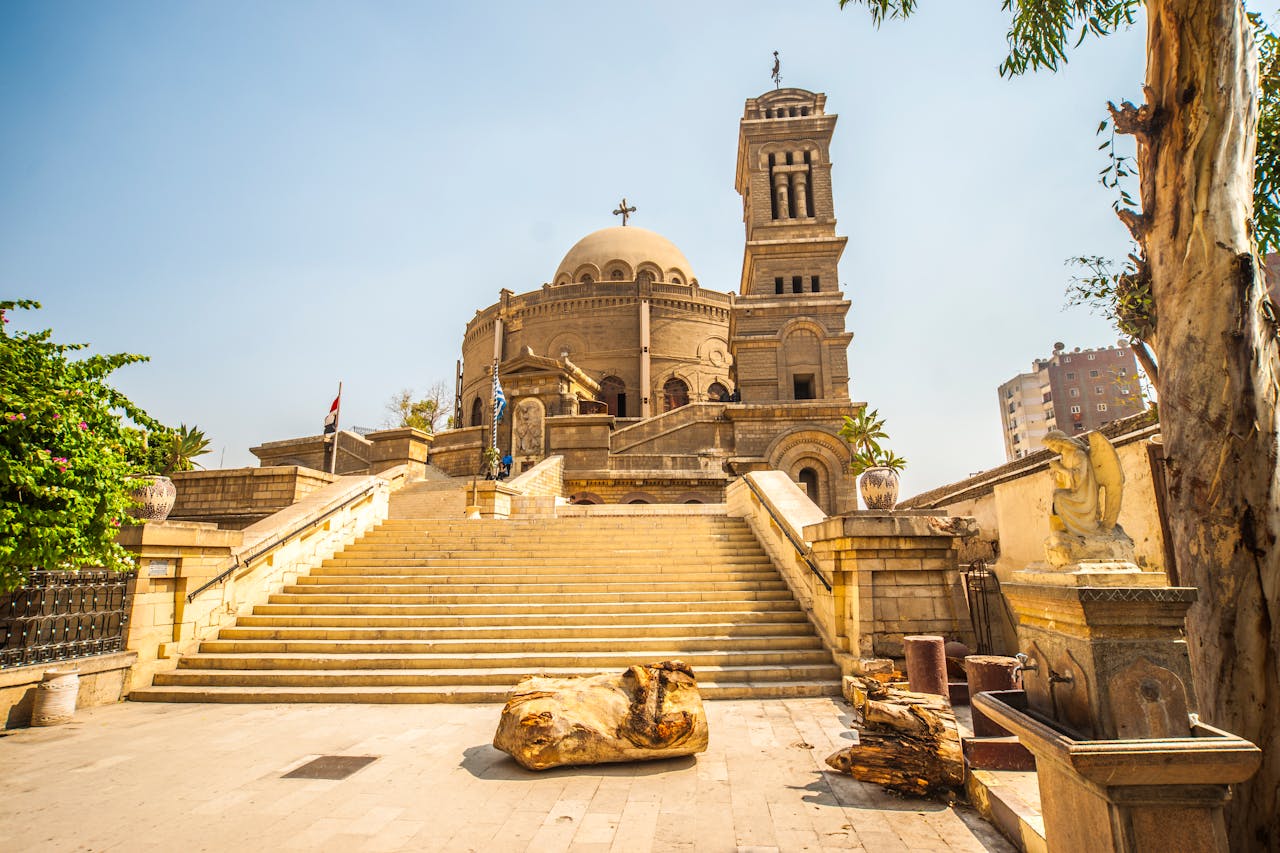Quick Bits:
Cairo, Egypt’s sprawling capital, is a place where ancient history meets bustling modernity. Known for its world-famous landmarks, including the Great Pyramids and the Nile River, Cairo is a gateway to some of the most iconic sites on Earth. It offers an unmatched journey through time, blending the old with the new, making it an ideal destination for history lovers, adventurers, and cultural enthusiasts alike.

Key Highlights
- Discover the Great Pyramids of Giza and the Sphinx
- Sail along the Nile River and experience Egyptian culture up close
- Explore Cairo’s bustling markets, including the famed Khan el-Khalili Bazaar
- Visit the historic Islamic Cairo, with its ancient mosques and architecture
- Witness Cairo’s lively arts and culinary scenes, showcasing both tradition and innovation
General Information
Cairo is one of the largest cities in both Africa and the Arab world. It serves as the political, cultural, and economic heart of Egypt. With a population exceeding 20 million, the city is vibrant and fast-paced, filled with activity both day and night. Cairo’s history stretches back over a thousand years, with influences from the ancient Egyptian, Islamic, and Ottoman periods.
Cairo is famous for being close to some of the world’s oldest and most important archaeological sites. Known as the “City of a Thousand Minarets,” it boasts a rich Islamic heritage. The bustling streets, unique architecture, and distinct neighborhoods add to its charm, offering visitors an opportunity to dive into the sights, sounds, and tastes of Egyptian life.

Geography Information
Cairo is located in northern Egypt, along the banks of the Nile River. This positioning has been crucial for Cairo’s development, as the Nile brought agriculture, trade, and early civilizations to the region. The city sits about 165 km (102 miles) south of the Mediterranean Sea, giving it a hot desert climate with minimal rainfall throughout the year.
Cairo’s location near the Nile Delta adds to its geographical significance. The river winds through the heart of the city, offering a natural and cultural divide, with the older areas typically found on the east bank and more modern districts on the west. Its proximity to the Sahara Desert brings hot summers, while winter nights can be cool.

Places to Visit
1. The Great Pyramids of Giza and the Sphinx
These ancient structures, dating back over 4,500 years, are Cairo’s crown jewels. The Great Pyramid of Khufu, one of the Seven Wonders of the Ancient World, remains awe-inspiring for both its size and construction precision. Nearby, the Great Sphinx stands as a mysterious guardian. Tours often include a chance to explore the pyramids’ interiors, where visitors can marvel at the ancient hieroglyphs.
2. The Egyptian Museum
Located in Tahrir Square, this museum holds one of the world’s most extensive collections of ancient Egyptian artifacts, including the famous treasures of Tutankhamun. Wandering through its vast galleries is like traveling through Egypt’s storied past. Key exhibits include mummies, jewelry, and statues from various dynasties.
3. Khan el-Khalili Bazaar
This market is one of Cairo’s most vibrant places, teeming with stalls that sell everything from jewelry to spices to hand-crafted souvenirs. A stroll through Khan el-Khalili offers a glimpse into Cairo’s trading history and is perfect for finding unique items. The cafes here are famous for traditional Egyptian tea, coffee, and shisha.
4. Islamic Cairo
The historic center of Cairo is dotted with grand mosques, ancient universities, and bustling souks. Notable sites include the Al-Azhar Mosque, a center for Islamic learning, and the Citadel of Cairo, which was built by Salah al-Din in the 12th century. The view from the Citadel is one of Cairo’s best, offering sweeping views over the city.
5. Coptic Cairo
For a journey through Egypt’s Christian heritage, Coptic Cairo features ancient churches, including the Hanging Church and St. Sergius and Bacchus Church. The area also houses the Coptic Museum, which displays art and artifacts from Egypt’s early Christian period.
6. The Nile River
No visit to Cairo is complete without a cruise along the Nile. Options range from traditional felucca rides to dinner cruises with Egyptian music and dance. The Nile offers a peaceful way to experience Cairo’s skyline and escape the urban bustle.

Yearly Climate
Cairo experiences a desert climate with little rainfall. Here’s a breakdown of what to expect throughout the year:
- Summer (June – August): Hot and dry, with temperatures often reaching above 35°C (95°F). Sun protection and hydration are essential during these months.
- Autumn (September – November): Temperatures begin to drop, making it more comfortable. It’s a quieter season, perfect for those who want to avoid summer crowds.
- Winter (December – February): Mild temperatures ranging from 10°C to 20°C (50°F to 68°F), with cool evenings. This is Cairo’s peak tourist season, and visitors can enjoy comfortably exploring the city’s sights.
- Spring (March – May): Warm and breezy with occasional sandstorms from the Sahara, known as the Khamsin winds. Temperatures are pleasant, making it an ideal season to explore Cairo.
Best Time of Year to Visit
The best time to visit Cairo is between October and April. During these months, temperatures are moderate, making it easier to explore Cairo’s outdoor sites without the intense summer heat. This period also coincides with Cairo’s cultural events, providing a rich experience for visitors.
Winter, from December to February, is Cairo’s peak season, especially for visitors looking to escape colder climates. Hotel rates and airfares tend to be higher, so early booking is recommended. For those who prefer smaller crowds, the shoulder seasons of October-November and March-April offer a balance of comfortable weather and fewer visitors.

In Summary…
Cairo stands as a testament to the blend of ancient and modern worlds. From the iconic Pyramids of Giza to the lively bazaars and historic districts, Cairo offers a unique mix of history, culture, and daily life. The city’s varied climate means there’s a season for everyone, while its vast selection of landmarks ensures there’s always something to explore. Whether you’re wandering through a museum, bargaining in a market, or sailing on the Nile, Cairo’s charm will stay with you long after you leave.






